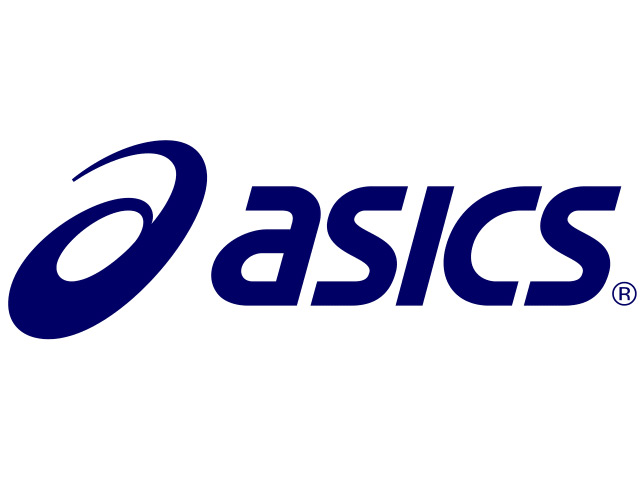Originally established in 1949, the ASICS sportswear organization offers exceptional sports shoes to the Japanese market, as well as other regions of the globe. And throughout its operations with affordable pricing and high-quality products, the business organization has fast become successful and popular within the sportswear market. Nonetheless, following inflated economic productivity, as well as increased competition, the business organization has strategically moved a considerable portion of its operations outside of the Japanese domain offering redesigned sports products to the international market, with the United States market being a prime target. The business organization launched its very first joggers’ sports shoes with a Gel technology designed to protect the feet of wearers.
Indeed, the product radically changed the sports market and was extensively successful having generated considerable brand awareness and great sales. The company’s acronym title, “Anima Sana in corpore sano” means “a healthy soul within a healthy body”, and also remains the company’s slogan. Following many of the organization’s successes over the past years of its operations, ASICS has turned out well-known but still relatively remains under the radar when compared to many of its competitors within the industry, such as Nike. And Adidas. Regardless, the business organization has remained at the top of the sports industry based on exceptional performance and has revamped its brand image to expand target consumer demographics, thereby becoming a more marketable brand.
May consumers, therefore, tend to go for the products offered by the company when prices turn out high owing to the psychological thought that relatively higher prices mean confirmation of authenticity and quality.
Perhaps the most recent marketing campaign by the company, “Play your Style”, got introduced on virtual media and investor day and was designed to strengthen and bolster the authenticity of the products designed and built by the company, as well as proliferate the organization’s activities when it gets to sustainability.
a. Mediator, the first, involves talented people who work with the company’s suppliers to acquire essential raw materials and often have vital roles associated with the improvement of product quality.
b. The sales team has been particularly essential for the marketing and sales of the company’s products, trained with marketing and convincing techniques to aid consumers find suitable choices.
c. The individuals engaged within the company’s retail stores directly help potential buyers on-site by responding to questions and giving exceptional experience at the store.
d. The support department specifically aids customers with concerns or issues regarding products and services offered within the company.
References.
Cerrato, C. (2018). The influence of digitalization over the international marketing mix strategy. A case study in the footwear industry.
Inthawong, T., & Sanpatanon, N. (2020). MARKETING FACTORS AFFECTING SNEAKERS BUYING BEHAVIOR ONLINE AND OFFLINE OF CUSTOMERS IN CHIANGMAI.
Jain, M. K. (2013). An analysis of marketing mix: 7Ps or more. Asian Journal of Multidisciplinary Studies, 1(4), 23-28.
Anjani, H. D., Irham, I., & Waluyati, L. R. (2018). Relationship of 7P marketing mix and consumers' loyalty in traditional markets. Agro Ekonomi, 29(2), 261-273.
Khan, M. T. (2014). The concept of ‘marketing mix and its elements. International Journal of information, business and management, 6(2), 95-107.
Indeed, the product radically changed the sports market and was extensively successful having generated considerable brand awareness and great sales. The company’s acronym title, “Anima Sana in corpore sano” means “a healthy soul within a healthy body”, and also remains the company’s slogan. Following many of the organization’s successes over the past years of its operations, ASICS has turned out well-known but still relatively remains under the radar when compared to many of its competitors within the industry, such as Nike. And Adidas. Regardless, the business organization has remained at the top of the sports industry based on exceptional performance and has revamped its brand image to expand target consumer demographics, thereby becoming a more marketable brand.
Marketing Mix.
The marketing mix for ASICS outlines the foundation model of the business organization which has a basis around the critical 7Ps which include product, promotion, price, distribution and price, physical evidence, process, and people. A business organization such as ASICS has often laid out marketing techniques and strategies around the foundation model to reach out to targeted consumers and to realize strategic marketing objectives.Product.
ASICS deals with different product lines designed for the sports industry, including apparel, footwear, football, accessories, golf equipment, and football kit, as well as other sports gear. The range of products designed and manufactured by ASICS get divided into different categories relative to different sports for which the company provides equipment and kits. In many cases, some of the sports in which the company designs and manufactures equipment and kits include ice hockey, basketball, football, cricket, lacrosse, gymnastics, golf, tennis, skateboarding, tennis, kabaddi, and running (Inthawong & Sanpatanon, 2020). The company has certainly gained considerable popularity through the decision to open subsidiaries and create business associations with different outlets such as Runtastic, Reebok, Rockport, and TylarMade, with Reebok having overtaken the company itself although over a hundred subsidiaries exist across the globe.Price.
The company has incorporated competitive pricing and skimming pricing within its marketing mix, with competitive prices getting used for manufactured products to deal with string brands such as Puma and Nike, and skimming prices getting used for newly introduced items within the market. Based on the company’s skimming price strategy, relatively high prices may get placed on new products to maintain the concept of exclusivity, and the prices gradually reduced over time until the desired market average gets realized. ASICS frequently uses the skimming price strategy when it gets to sports apparel owing to its brand equity. Therefore, the target consumers of the company’s products include the middle and upper-middle class, as well as some high-end consumers (Anjani, Irham, & Waluyati, 2018). It has been proposed that the relatively higher prices, particularly on new products, make the company a luxury organization in some regions.May consumers, therefore, tend to go for the products offered by the company when prices turn out high owing to the psychological thought that relatively higher prices mean confirmation of authenticity and quality.
Place and Distribution.
ASICS has certainly progressed relatively fast for a rather new organization within the sports industry, having about fifty-five production houses across the globe and eight hundred manufacturing facilities strategically pinned across the continents. The primary source through which the products and services offered by the business organization get sold focuses on different retail stores such as ASICS outlets. The company has been reported to have more than two thousand eight hundred retail outlets across the globe. The company has further exploited multi-brand showrooms as another strategic means of distributing its sports kits and gear, with the showrooms getting the products from selected distributors and putting the products on display (Jain, 2013). And it has been proven that no robust organization has thrived within the modern world without a strategic online store. For this reason, the company has further ventured into an online platform with some popular products such as apparel getting sold through popular online stores such as Amazon and Myntra.Promotion.
Television advertisements concerning ASICS often are adrenaline pumping because the company’s strength get derived from sports, and therefore robust and passionate. As such, one of the most considerable ways of advertisement the organization prefers has been the media. Another reasonable method of marketing chosen by the company is product placement. For the company, the concept of product placement has meant instances where strategic references to the company’s products get made by featuring popular products within other works such as television and movies (Khan, 2014). Additionally, the popularity of ASICS has often been linked to strategic tie-ups with some sports icons such as Ronaldo and Lionel Messi, as well as some sponsors for icon sports teams in football. That aside, the company has further been recognized for its creativity in its marketing campaigns and marketing events, with social media having been exploited exceptionally by the company; ASICS has millions of social media fans on its Instagram and Facebook accounts (Khan, 2014).Perhaps the most recent marketing campaign by the company, “Play your Style”, got introduced on virtual media and investor day and was designed to strengthen and bolster the authenticity of the products designed and built by the company, as well as proliferate the organization’s activities when it gets to sustainability.
People.
With the people strategy, ASICS has incorporated four fundamental categories or departments which have considerably contributed to systematic and smooth operations.a. Mediator, the first, involves talented people who work with the company’s suppliers to acquire essential raw materials and often have vital roles associated with the improvement of product quality.
b. The sales team has been particularly essential for the marketing and sales of the company’s products, trained with marketing and convincing techniques to aid consumers find suitable choices.
c. The individuals engaged within the company’s retail stores directly help potential buyers on-site by responding to questions and giving exceptional experience at the store.
d. The support department specifically aids customers with concerns or issues regarding products and services offered within the company.
Process.
With a strategic system installed within retail stores designed to inform whenever inventory runs low, ASICS has certainly an intensive process from ordering a specific product to delivery. For the company’s website, a strategic ordering and product tracking system has gotten installed to aid sales operations, where orders placed in products get registered and relevant products shipped and delivered to the consumers (Khan, 2014). ASICS has recently been involved in customer feedback and market research extensively to understand the problems and choices customers might face, and to bring essential changes accordingly.Physical.
High-quality images on the company’s user-friendly website help customers recognize and have a full understanding of desired products. The customer service department, also part of the user-friendly website engaged by the company, further helps customers with issues regarding the products listed on the site, as well as possible issues related to ordering products within the site (Jain, 2013). The company’s retail stores have incorporated specially designed shelves designed to make in-site shopping easier and straightforward for customers. Colorful packaging for many of the products was selected by the company to make different sports products easily identifiable and unique during in-store shopping.Conclusion.
Within the mentioned 7Ps, it is reasonable that v has fast become successful over the years of its operations, and certainly will continue to innovate better products for different customers across the globe. The company has consistently proven innovative when it comes to products that improve comfort, as well as creative campaigns that never fail to bolster the confidence of customers in the brand. It is reasonable that ASICS has maintained its credibility and sustainability by always catering to customers within targeted markets through the provision of quality products. Additionally, thousands of the company’s outlets across different regions of the globe have made the brand recognizable and accessible. With signature branding, the company has certainly created a distinguished position within the market.References.
Cerrato, C. (2018). The influence of digitalization over the international marketing mix strategy. A case study in the footwear industry.
Inthawong, T., & Sanpatanon, N. (2020). MARKETING FACTORS AFFECTING SNEAKERS BUYING BEHAVIOR ONLINE AND OFFLINE OF CUSTOMERS IN CHIANGMAI.
Jain, M. K. (2013). An analysis of marketing mix: 7Ps or more. Asian Journal of Multidisciplinary Studies, 1(4), 23-28.
Anjani, H. D., Irham, I., & Waluyati, L. R. (2018). Relationship of 7P marketing mix and consumers' loyalty in traditional markets. Agro Ekonomi, 29(2), 261-273.
Khan, M. T. (2014). The concept of ‘marketing mix and its elements. International Journal of information, business and management, 6(2), 95-107.









